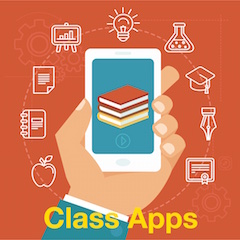Keep Students’ Brains Busy Over the Summer
A MiddleWeb Blog
 This year, one of my sons set a new record. It took him only six days to walk into the kitchen and announce how bored he was of summer break. This, by the way, shattered his old record by nearly a week.
This year, one of my sons set a new record. It took him only six days to walk into the kitchen and announce how bored he was of summer break. This, by the way, shattered his old record by nearly a week.
In all honesty—my wife and I relish summer months. As educators, we love having extra time with our kids, working with them in the yard, trying out a hobby or two, and doing what we can to be get caught up on the immense list of to-do’s after a school year’s worth of teacher duties and our own children’s schoolwork, sports, and music practices.
Psychologists are quick to point out that that regular rest and breaks aren’t necessarily bad for students’ brains. In fact, downtime is an essential part of cognitive health (Immordino-Yang, Christodoulou, & Singh, 2012).
But for most students, a long summer break means much less brain exercise. It means staying up late and significantly more screen time. This ‘seismic’ shift to their learning routine is nearly guaranteed to result in reduced knowledge, skills, and overall cognitive capacity (Paechter et al., 2015).
The challenge becomes to encourage students to take a break from school, but not from learning.
Keeping Students Reading
A while back, I wrote about some excellent tools that can be used over the summer to connect student with non-fiction topics and current events. Last year’s list included TweenTribute, Listenwise, and Newsela. This summer, I have stumbled upon some new sites worth pointing tweens and teens towards.

KidsPost from the Washington Post is another news site that offers some added, engaging reading practice. It includes articles, puzzles, competitions, an occasional focus on historical events, and a variety of other reading activities for kids. It also has a Readers’ Corner feature with book reviews written in a kid-friendly voice.
A student of mine recently introduced me to Overdrive—a free service that allows you to borrow (and use your device to digitally access) eBooks, audiobooks, and more from your local public library. All you need is a library card. Even if the book I want is checked out by too may users through my local library, Overdrive does a great job suggesting other titles that I would be interested in.
Tools for Moving Forward in Math
Many schools offer their students access to fun math sites during the school year. The problem is that those subscriptions often change (or get cancelled) during the summer. So what else can students get their hands on?

NRICH is a fantastic site put together by the University of Cambridge that houses a variety of math problems and math games for students. All activities are arranged by topic and grade level bands and are designed to foster mathematical thinking and to encourage students to explore, question, and notice math in the real world.
Another useful online practice resource is AAA Math. It is designed for grades K-8 and doesn’t require any sort of registration. It aims to provide students with immediate feedback for computational problems as well as word-based ones.
Gearing Up for the New School Year
Originally, the school calendar (including a long summer break) was designed with farming families in mind. This meant that most kids spent their ‘vacation’ actively engaging their bodies and minds in difficult work.
Today, far fewer households are tied to agriculture. Yet long summer breaks continue in many communities. It’s possible that some of our students are at home, spending their days on meaningful projects and working to develop new knowledge and skills. But I’m guessing that the vast majority of them are likely doing other things—many of which are turning their brains to mush.
As a teacher, the least I can do is send a few tools their way to encourage them to keep learning, reviewing, developing, and preparing for the upcoming school year.
While you’re on break, read Bill Ferriter’s MiddleWeb article:
“The Glories of Year Round Schooling”
References
Immordino-Yang, M. H., Christodoulou, J. A., & Singh, V. (2012). Rest is not idleness: Implications of the brain’s default mode for human development and education. Perspectives on Psychological Science, 7(4), 352-364.
Paechter, M., Luttenberger, S., Macher, D., Berding, F., Papousek, I., Weiss, E. M., & Fink, A. (2015). The Effects of Nine-Week Summer Vacation: Losses in Mathematics and Gains in Reading. Eurasia Journal of Mathematics, Science & Technology Education, 11(6).



































